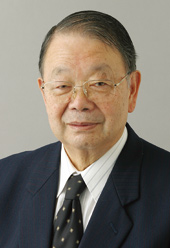Message
I have studied "communication engineering", "operations research", "road traffic control", etc.Research on "Communication Engineering" began in the early 1960s with a proposal for a multimedia communication system using asynchronous time division multiplexing.At the time when the former Wireline Telecommunications Law was in effect, it ended not receiving much attention, but retrospectively, I realized that my train of thought was not so wrong and gained confidence.
After I was transferred to the Planning Engineering Course at Kyoto University, I became familiar with "operations research" and got an opportunity to get involved in the reality of "road traffic control" as an application field.
This brought me an important experience.
Instead of controlling a car on the road, I came to believe that we should think about what kind of road-related information we should provide to the human drivers to help them make their decisions.We have come to understand that "Road Traffic Control" systems are clearly interactive information systems that include humans.
For more than 40 years, I had the privilege of studying at the "road traffic control" of toll expressways mainly in cities.
As for people of our generation who have studied communications engineering, I think that we had mainly relied on mathematical models.
In a sense, we've been thinking about systems that was missing the human factors.
Needless to say, the benefits of relying on mathematical models must be taken into account as well.
It is especially important to make the structure of the model and its basic position clear to others.
You can uncover the logical structure under an axiomatic system.
The question is how to include the human factors in that model.
When this becomes possible, we gain new insights.
As a method for this, for example, the system dynamics method is considered to be effective as an established method.
Studying and researching at The Kyoto College of Graduate Studies for Informatics will certainly broaden our horizons.
I'm sure we can open up a new horizon.
